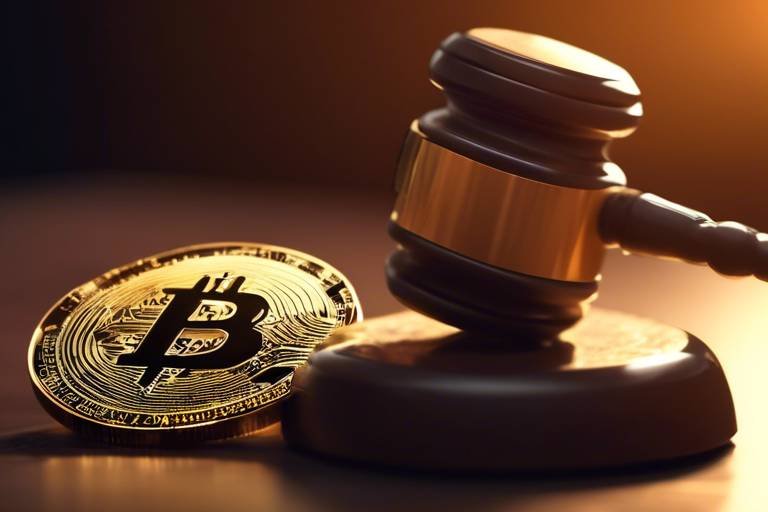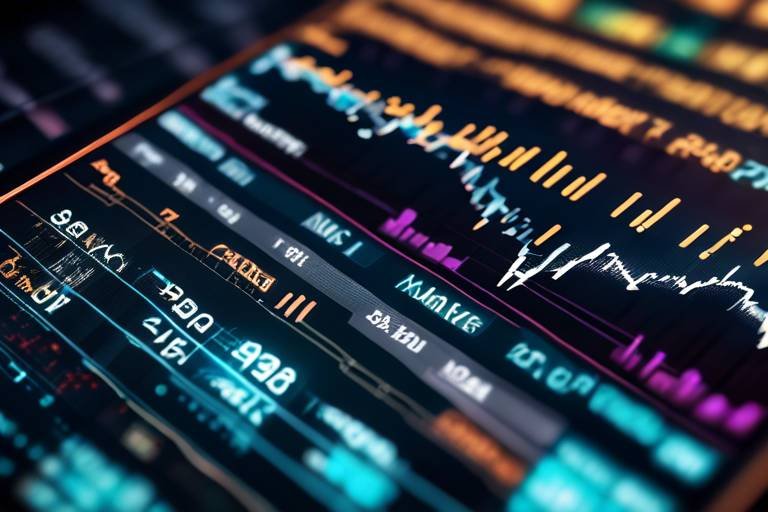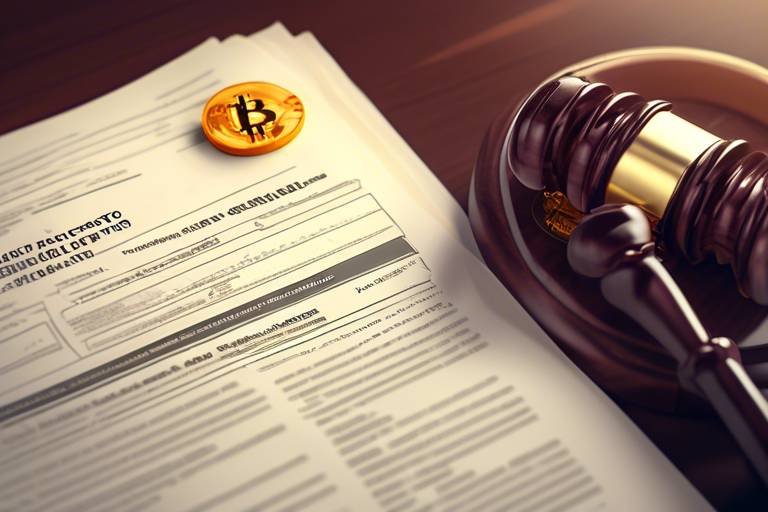Understanding the Future of Decentralized Finance
Decentralized Finance, commonly known as DeFi, is not just a buzzword; it’s a revolutionary shift in how we perceive and engage with financial services. Imagine a world where banks and financial institutions are not the gatekeepers of your money, but rather, you are in complete control. This is the essence of DeFi—empowering individuals by removing intermediaries and creating an open financial system accessible to everyone, regardless of their location or economic status.
The rise of DeFi has been nothing short of meteoric. In just a few years, we've witnessed a surge in innovative financial products that challenge the status quo. From lending platforms to decentralized exchanges, the landscape is rapidly evolving. But what does this mean for traditional finance? Will banks become obsolete, or will they adapt and integrate these new technologies? As we delve deeper into the world of DeFi, it's essential to understand its core components and the transformative potential it holds for the future.
One of the most exciting aspects of DeFi is its ability to democratize access to financial services. With just a smartphone and an internet connection, anyone can participate in lending, borrowing, trading, and earning interest on their assets. This inclusivity is a game-changer, especially for those in underbanked regions where traditional banking services are limited or non-existent. As we continue to explore the innovations driving DeFi, we’ll also uncover the challenges that come with this new paradigm, including security risks, regulatory scrutiny, and the need for user education.
As we look ahead, the future of DeFi is promising, filled with potential and opportunities. However, it’s also a landscape that requires careful navigation. With advancements in technology and a growing understanding of decentralized systems, we can expect to see a more integrated approach to finance that blends the best of both worlds—traditional finance and decentralized finance. The question remains: are we ready to embrace this change? The answer lies in our willingness to adapt and evolve alongside these innovations.
- What is Decentralized Finance (DeFi)? - DeFi refers to financial services that operate on decentralized networks, allowing users to transact without intermediaries.
- How does DeFi differ from traditional finance? - Unlike traditional finance, which relies on banks and financial institutions, DeFi uses blockchain technology to provide open access to financial services.
- What are the risks associated with DeFi? - Risks include smart contract vulnerabilities, regulatory challenges, and market volatility.
- Can anyone participate in DeFi? - Yes, anyone with internet access can engage in DeFi, making it a more inclusive financial ecosystem.

The Rise of Decentralized Finance
Decentralized finance, or DeFi, has emerged as a revolutionary force in the financial world, capturing the imagination of investors, developers, and everyday users alike. Over the past few years, we've witnessed a remarkable shift in how people view and interact with financial services. Gone are the days when traditional banks and financial institutions held the monopoly on financial transactions. Now, thanks to blockchain technology and innovative protocols, individuals can engage in financial activities without relying on intermediaries. This shift has not only democratized access to financial services but has also opened up a plethora of opportunities for users around the globe.
So, what exactly is driving this meteoric rise of DeFi? For starters, the appeal lies in its ability to offer greater financial freedom. Users can lend, borrow, trade, and earn interest on their assets without the constraints imposed by traditional finance. Imagine being able to access loans or investment opportunities at the click of a button, without the need for credit checks or lengthy approval processes. This newfound freedom is particularly beneficial for those in underbanked regions, where access to traditional banking services is limited.
Moreover, the transparency inherent in DeFi platforms is another significant factor contributing to its popularity. Every transaction is recorded on the blockchain, allowing users to verify the integrity of their financial dealings in real-time. This level of transparency fosters trust among users, as they can easily audit the activities taking place within the platforms. In contrast, traditional financial systems often operate behind closed doors, leaving consumers in the dark about how their money is being managed.
Additionally, the innovation landscape within DeFi is constantly evolving. New projects and platforms are emerging at an astonishing pace, each offering unique features and services that cater to the diverse needs of users. For instance, protocols that allow for yield farming and liquidity mining have gained traction, enticing users with the promise of high returns on their investments. These concepts not only incentivize participation but also create a vibrant ecosystem where users can engage with their assets in innovative ways.
However, it's essential to recognize that the rise of DeFi isn't without its challenges. As the space grows, so do concerns about security, regulatory compliance, and market volatility. Users must navigate these risks carefully, ensuring they understand the platforms they engage with and the potential pitfalls involved. The journey into decentralized finance is akin to exploring uncharted waters; while there are vast opportunities for growth and profit, there are also treacherous currents that can lead to losses if one isn’t cautious.
In summary, the rise of decentralized finance represents a paradigm shift in how we perceive and interact with financial services. It offers unprecedented opportunities for freedom, transparency, and innovation. As we continue to explore this exciting landscape, it’s crucial for users to stay informed and engaged, ensuring they can make the most of what DeFi has to offer while being mindful of the challenges that lie ahead.
- What is DeFi? Decentralized Finance (DeFi) refers to financial services that operate on blockchain technology, allowing users to engage in transactions without intermediaries.
- How does DeFi differ from traditional finance? DeFi eliminates the need for banks and financial institutions, offering users direct control over their assets and transactions.
- What are the risks associated with DeFi? Risks include smart contract vulnerabilities, regulatory uncertainties, and market volatility that can affect investments.
- Can anyone participate in DeFi? Yes, anyone with an internet connection can access DeFi platforms, making financial services more accessible to a broader audience.

Key Components of DeFi
Decentralized Finance, or DeFi, is revolutionizing the financial landscape by introducing a plethora of innovative tools and technologies that empower users. At its core, DeFi is built upon several key components that work in harmony to create a seamless financial ecosystem. Understanding these components is essential for anyone looking to navigate the world of decentralized finance.
One of the fundamental building blocks of DeFi is smart contracts. These self-executing contracts are coded on blockchain platforms, allowing transactions to occur automatically when predefined conditions are met. This eliminates the need for intermediaries, such as banks or brokers, and fosters trust among participants. Imagine a vending machine: you insert money, select your snack, and the machine delivers it without needing a cashier to facilitate the transaction. That’s the beauty of smart contracts!
Next, we have decentralized exchanges (DEXs). Unlike traditional exchanges, DEXs allow users to trade cryptocurrencies directly with one another, without the need for a central authority. This enhances privacy and gives users complete control over their assets. It’s like a farmers' market where you can directly negotiate with the seller without a middleman dictating prices. DEXs are crucial for creating a more open and accessible trading environment.
Another vital element is liquidity pools. These are essentially reservoirs of funds locked in smart contracts, enabling users to trade assets while providing liquidity. When users contribute their assets to these pools, they earn transaction fees in return. Think of liquidity pools as a community garden: everyone contributes their resources, and in return, the garden flourishes, providing benefits to all participants. This system incentivizes users to participate actively in the DeFi ecosystem.
Lastly, we cannot overlook the significance of governance tokens. These tokens empower users to participate in the decision-making processes of DeFi protocols. Holders of governance tokens can vote on crucial proposals, shaping the future of the platform. It’s akin to being a shareholder in a company, where your voice matters in determining the direction of the business. Governance tokens promote community engagement and decentralization, ensuring that the power remains in the hands of the users rather than a select few.
In summary, the key components of DeFi—smart contracts, decentralized exchanges, liquidity pools, and governance tokens—are integral to its operational framework. They not only enhance efficiency and accessibility but also foster a sense of community and trust among users. As these components continue to evolve, they will shape the future of finance in ways we can only begin to imagine.
- What is DeFi? - DeFi stands for decentralized finance, a financial system built on blockchain technology that allows users to engage in financial transactions without intermediaries.
- How do smart contracts work? - Smart contracts are self-executing contracts with the terms of the agreement directly written into code, enabling automatic execution of transactions.
- What are DEXs? - Decentralized exchanges (DEXs) allow users to trade cryptocurrencies directly with one another, enhancing privacy and control over assets.
- What are liquidity pools? - Liquidity pools are collections of funds locked in smart contracts that facilitate trading and reward users for providing liquidity.
- What are governance tokens? - Governance tokens give holders voting rights on key proposals within DeFi protocols, allowing them to influence the platform's development.
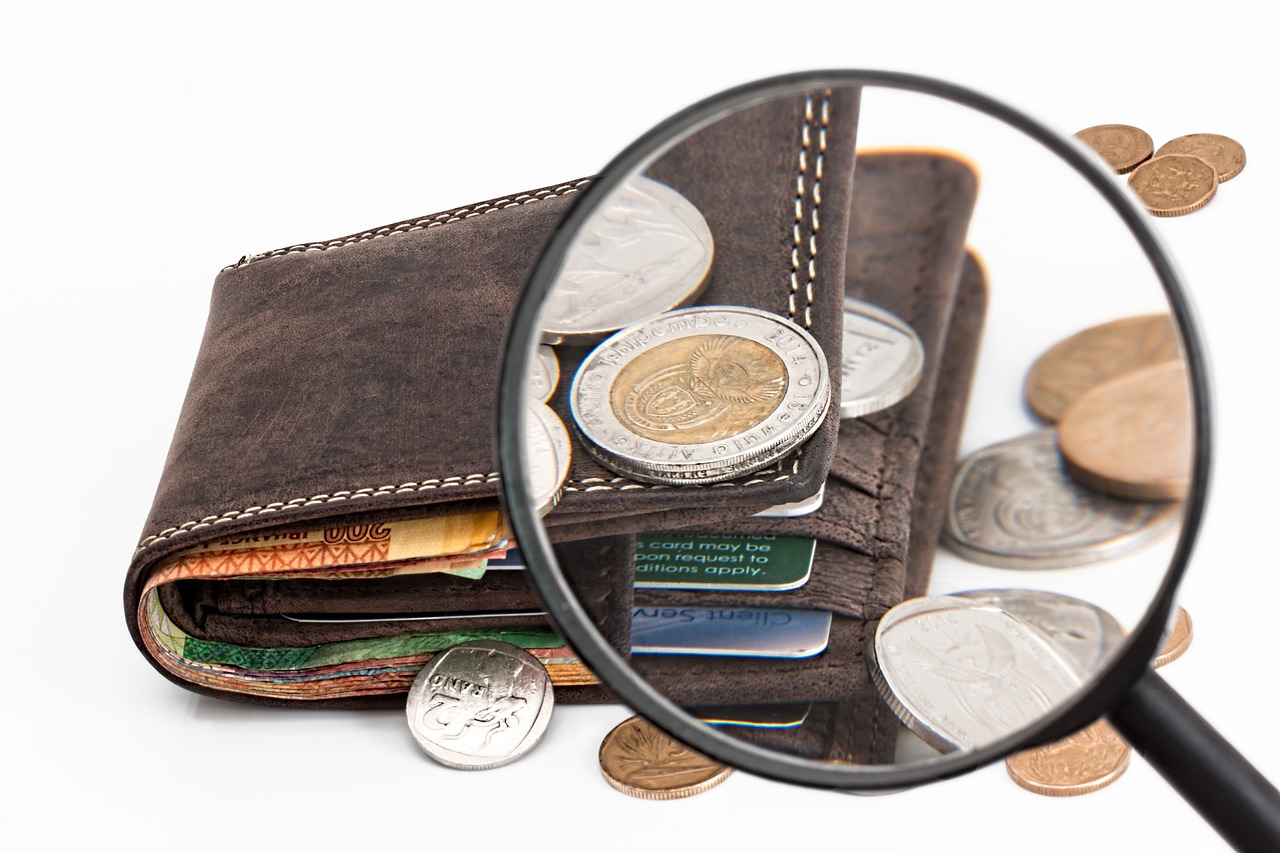
Smart Contracts Explained
Smart contracts are the unsung heroes of the decentralized finance (DeFi) world, acting as the digital glue that binds transactions and agreements without the need for a middleman. Imagine a traditional contract, but instead of being penned on paper and requiring a lawyer's stamp, it's coded in a blockchain. This revolutionary technology automates the execution of contracts, ensuring that all parties adhere to the terms agreed upon. When the conditions set in the contract are met, the smart contract automatically executes the agreed-upon actions. It’s like having a vending machine for agreements—put in your money (or cryptocurrency), select your item (or action), and voilà, it’s delivered without any human intervention!
At its core, a smart contract is a self-executing contract with the terms of the agreement directly written into code. This code is stored and replicated on the blockchain, making it secure, transparent, and tamper-proof. But what exactly makes smart contracts so appealing? Let's break it down:
- Automation: Smart contracts eliminate the need for manual processing, which reduces the risk of human error and speeds up transactions.
- Trust: Since the contract is executed on a blockchain, all parties can trust that the terms will be fulfilled as stated, without the need for a third party.
- Cost-Effectiveness: By cutting out intermediaries, smart contracts can significantly lower transaction costs.
- Security: The decentralized nature of blockchain technology means that once a smart contract is deployed, it’s incredibly difficult to alter or hack.
However, while the benefits are compelling, smart contracts aren’t without their pitfalls. Coding errors can lead to vulnerabilities, and once a contract is deployed, it’s challenging to make changes. This is why thorough testing and auditing are crucial before launching any smart contract. Think of it as building a house: if the foundation is flawed, the entire structure is at risk.
Moreover, the regulatory landscape surrounding smart contracts is still developing. As governments and financial institutions begin to take notice of DeFi, the legal implications of smart contracts are under scrutiny. How will these contracts be treated under existing laws? Will they be recognized in court? These are questions that need to be addressed as the technology matures.
In summary, smart contracts represent a groundbreaking shift in how we approach agreements and transactions in finance. They offer a blend of efficiency, security, and trust that traditional systems struggle to match. As we continue to explore the DeFi landscape, understanding the ins and outs of smart contracts will be crucial for anyone looking to navigate this exciting new world.
- What is a smart contract?
A smart contract is a self-executing contract with the terms directly written into code, stored on a blockchain. - How do smart contracts work?
They automatically execute actions when predefined conditions are met, eliminating the need for intermediaries. - Are smart contracts secure?
While they offer enhanced security, vulnerabilities can arise from coding errors, so thorough testing is essential. - What are the risks associated with smart contracts?
Risks include coding errors, regulatory uncertainties, and the difficulty of altering deployed contracts.
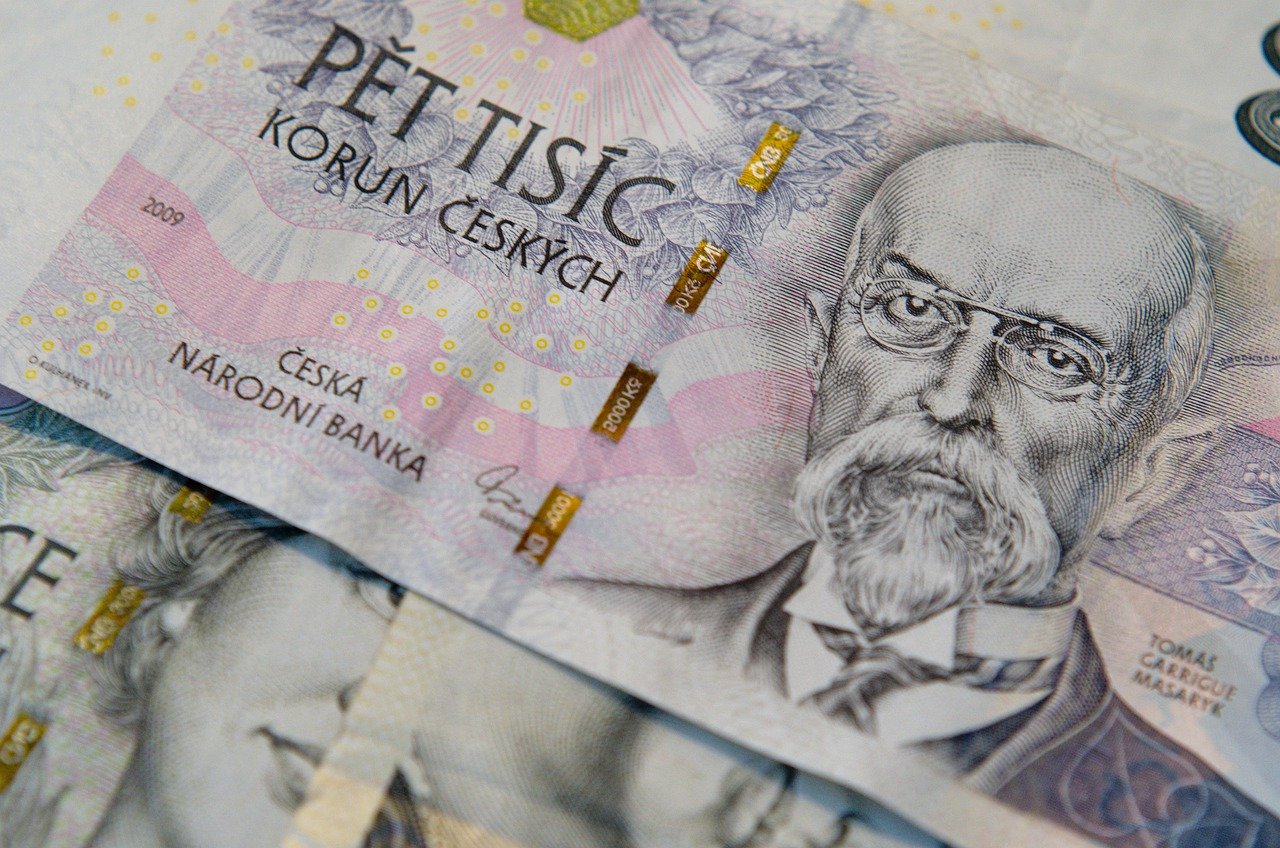
Benefits of Smart Contracts
Smart contracts are revolutionizing the way we think about transactions and agreements in the decentralized finance (DeFi) space. These self-executing contracts, with the terms of the agreement directly written into code, offer a plethora of benefits that traditional financial systems simply cannot match. Imagine a world where contracts execute automatically, without the need for intermediaries. Sounds like a dream, right? Well, that dream is becoming a reality!
One of the most significant advantages of smart contracts is their ability to enhance efficiency. In traditional finance, the involvement of banks and other intermediaries often slows down processes, leading to delays and increased costs. With smart contracts, transactions can be completed in a matter of seconds. This is not just about speed; it’s about freeing up resources and allowing individuals and businesses to focus on what truly matters.
Moreover, smart contracts significantly reduce costs. By eliminating the need for intermediaries, users can save on fees that would typically be paid to banks or brokers. This is particularly beneficial for individuals and small businesses that may not have the capital to absorb these costs. Additionally, because smart contracts operate on blockchain technology, they are inherently more secure, reducing the risk of fraud and manipulation.
Another critical benefit is the transparency that smart contracts provide. All transactions are recorded on the blockchain, making them publicly accessible and verifiable. This transparency fosters trust among users, as everyone can see the terms of the contract and the actions taken. In a world where trust is often hard to come by, this is a game-changer.
However, it's essential to recognize that while the benefits are compelling, smart contracts are not without challenges. Issues such as coding errors can lead to unintended consequences, and security vulnerabilities can expose users to risks. Therefore, it’s vital for developers to conduct thorough audits and for users to approach DeFi with a healthy dose of caution.
To summarize, the benefits of smart contracts can be encapsulated as follows:
- Efficiency: Faster transactions without intermediaries.
- Cost-Effectiveness: Reduced fees and expenses.
- Transparency: Publicly accessible records on the blockchain.
- Security: Enhanced protection against fraud and manipulation.
In conclusion, smart contracts are a cornerstone of the DeFi revolution, offering unprecedented advantages that challenge the status quo of traditional finance. As we continue to explore the potential of decentralized finance, understanding these benefits will be crucial for anyone looking to navigate this exciting new landscape.
Q1: What are smart contracts?
A1: Smart contracts are self-executing contracts with the terms of the agreement directly written into code, allowing for automated transactions without intermediaries.
Q2: How do smart contracts enhance security?
A2: They operate on blockchain technology, which is inherently secure and reduces the risk of fraud and manipulation.
Q3: Are there risks associated with smart contracts?
A3: Yes, coding errors and security vulnerabilities are potential risks, which is why thorough audits are essential.
Q4: Can smart contracts be modified after deployment?
A4: Generally, smart contracts are immutable once deployed, meaning they cannot be changed. However, developers can create upgradeable contracts, but this requires careful planning.

Challenges of Smart Contracts
While smart contracts are often hailed as the revolutionary backbone of decentralized finance (DeFi), they are not without their challenges. Imagine a world where contracts execute automatically and transparently, eliminating the need for intermediaries. Sounds perfect, right? However, this vision is clouded by several significant hurdles that developers and users must navigate.
One of the primary challenges lies in coding errors. Just like a typo in a recipe can ruin a dish, a small mistake in the code of a smart contract can lead to catastrophic failures. These errors can result in funds being locked indefinitely or, worse, lost entirely. The immutable nature of blockchain means that once a smart contract is deployed, it cannot be altered. This creates a pressing need for rigorous testing and auditing before launch to ensure that everything works as intended.
Moreover, security vulnerabilities pose another critical risk. Hackers are constantly on the lookout for exploits in smart contracts. For instance, the infamous DAO hack in 2016 resulted in the theft of millions of dollars due to a flaw in the contract's code. Such incidents highlight the importance of robust security measures, including thorough audits and real-time monitoring, to safeguard user funds. Without these precautions, the trust that DeFi aims to establish can quickly erode.
Additionally, regulatory uncertainties loom large over the future of smart contracts. As governments and regulatory bodies begin to scrutinize the DeFi space, the legal status of smart contracts remains ambiguous. Will they be recognized as legally binding agreements? How will they be regulated? These questions are still up in the air, and until there is clarity, the widespread adoption of smart contracts may be hindered.
In summary, while smart contracts have the potential to transform the financial landscape, they come with their own set of challenges that must be addressed. From coding errors and security vulnerabilities to regulatory uncertainties, these issues require ongoing attention and innovation. The future of DeFi hinges on overcoming these obstacles and building a more secure and reliable framework for users.
- What are smart contracts? Smart contracts are self-executing contracts with the terms of the agreement directly written into code, allowing for automatic execution without intermediaries.
- What are the main risks associated with smart contracts? The main risks include coding errors, security vulnerabilities, and regulatory uncertainties.
- How can I ensure the security of my smart contracts? Regular audits, thorough testing, and employing best practices in coding can help enhance the security of smart contracts.
- Will smart contracts replace traditional contracts? While they offer significant advantages, it is unlikely that smart contracts will completely replace traditional contracts in the near future due to legal and regulatory complexities.
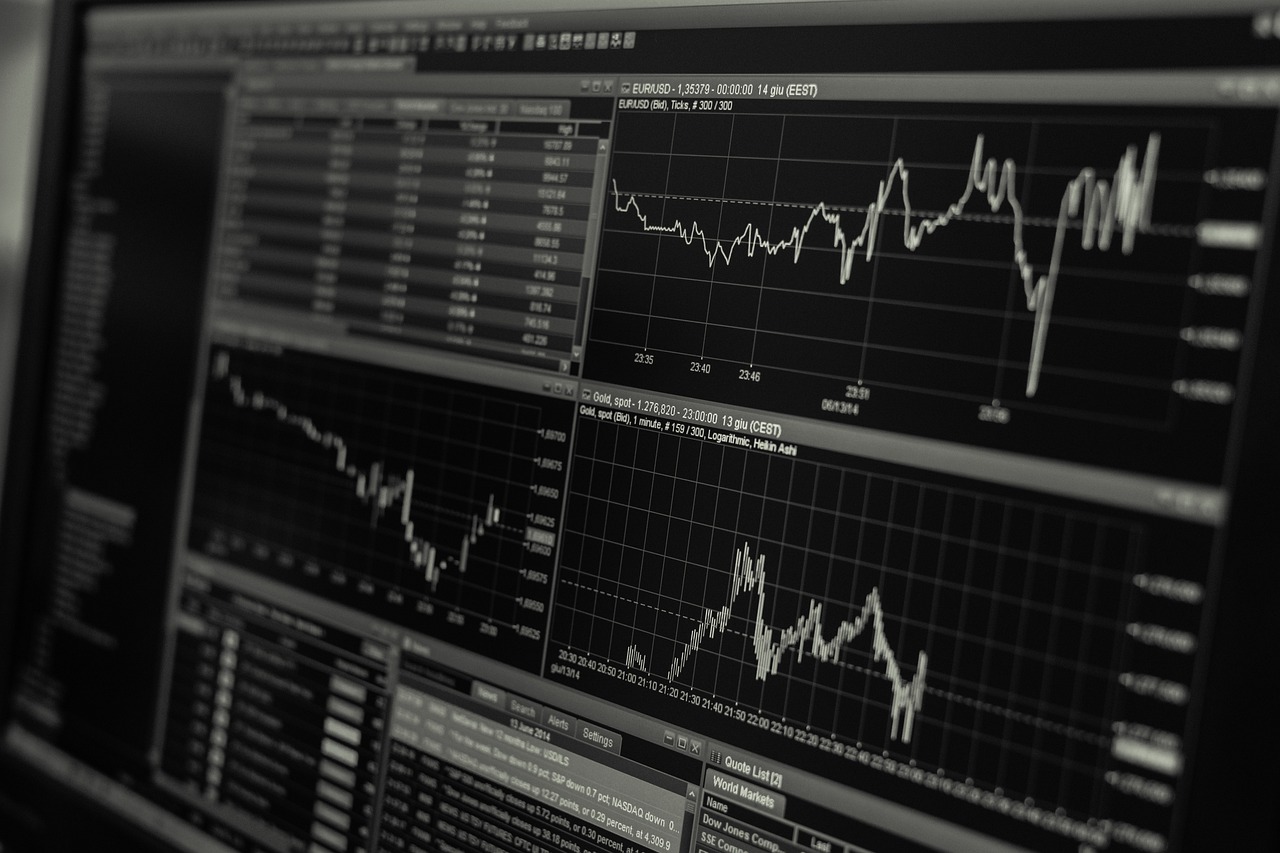
Decentralized Exchanges (DEXs)
Decentralized exchanges, commonly known as DEXs, represent a revolutionary shift in the way we trade cryptocurrencies. Unlike traditional exchanges that operate on a centralized model, DEXs allow for peer-to-peer trading directly between users. This means that you can buy, sell, or swap cryptocurrencies without the need for a middleman. Imagine walking into a marketplace where you can trade goods directly with other people, without any store owner or cashier involved. That's essentially what a DEX offers in the world of digital assets.
One of the most significant advantages of using DEXs is the enhanced level of control they provide to users. When you trade on a centralized exchange, you typically deposit your funds into the exchange’s wallet, which exposes you to risks such as hacks or insolvency. However, with DEXs, you retain custody of your assets throughout the trading process. This means your funds are securely held in your own wallet, giving you peace of mind and reducing the risk of losing your investment due to a third-party failure.
Moreover, DEXs offer greater privacy compared to their centralized counterparts. Most centralized exchanges require you to complete a Know Your Customer (KYC) process, which involves providing personal information and identification. On the other hand, many DEXs allow you to trade without revealing your identity, making them an attractive option for those who value their privacy. However, this anonymity can also raise concerns regarding compliance with regulations, which is an ongoing debate in the crypto community.
Another fascinating aspect of DEXs is how they utilize smart contracts to facilitate trades. These self-executing contracts are coded to automatically execute transactions when certain conditions are met. This not only speeds up the trading process but also minimizes the chances of human error or manipulation. For example, if you want to trade Ethereum for Bitcoin, a smart contract will ensure that the transaction occurs seamlessly, provided that both parties fulfill their obligations.
Despite their numerous benefits, DEXs are not without challenges. One of the primary issues is liquidity. Since DEXs operate on a peer-to-peer basis, they often struggle to match buyers with sellers, particularly for less popular tokens. To combat this, many DEXs implement liquidity pools where users can contribute their assets, allowing others to trade without significant price slippage. This creates a more stable trading environment and encourages user participation.
Here's a quick overview of some popular DEXs and their unique features:
| DEX Name | Unique Feature |
|---|---|
| Uniswap | Automated market maker (AMM) model |
| SushiSwap | Community-driven with rewards for liquidity providers |
| Curve Finance | Optimized for stablecoin trading |
| PancakeSwap | Low fees and Binance Smart Chain integration |
In conclusion, decentralized exchanges are paving the way for a more democratized and user-centric trading experience in the cryptocurrency market. By eliminating intermediaries and enhancing user control, DEXs are not only reshaping the trading landscape but also fostering a sense of community among users. As the technology continues to evolve and more users become aware of the benefits, we can expect DEXs to play a pivotal role in the future of finance.
- What are DEXs? DEXs are decentralized exchanges that allow users to trade cryptocurrencies directly with one another without a central authority.
- How do DEXs ensure security? DEXs use smart contracts to automate transactions, and users retain control of their funds, minimizing risks associated with centralized exchanges.
- Do I need to complete KYC on DEXs? Most DEXs do not require KYC, allowing for greater privacy in trading.
- What is liquidity in DEXs? Liquidity refers to the availability of assets for trading. DEXs often use liquidity pools to facilitate smoother transactions.

Liquidity Pools and Yield Farming
Liquidity pools and yield farming are two of the most fascinating innovations emerging from the decentralized finance (DeFi) space. These concepts not only enhance user engagement but also create opportunities for individuals to earn passive income by participating in the DeFi ecosystem. But what exactly are liquidity pools and yield farming, and how do they work? Let's dive into these intriguing elements.
At its core, a liquidity pool is a collection of funds locked in a smart contract that facilitates trading on decentralized exchanges (DEXs). Imagine a swimming pool filled with different types of assets, where users can dive in to trade without needing a lifeguard to oversee the transactions. Users contribute their assets to these pools, which are then used to provide liquidity for trading pairs. In return for their contribution, liquidity providers earn a share of the transaction fees generated from trades that occur within the pool. This model not only ensures that there are enough assets available for trading but also incentivizes users to participate actively.
Now, let’s talk about yield farming. This is where things get even more exciting! Yield farming allows users to maximize their returns on investments by strategically allocating their assets across various DeFi platforms. Think of it as farming crops in different fields to yield the best harvest. Users can move their assets between different liquidity pools and platforms to chase the highest interest rates or rewards. The competitive nature of yield farming encourages users to stay informed about the best opportunities, leading to a dynamic and ever-evolving landscape.
However, while the potential rewards are enticing, it's essential to understand the risks involved. Both liquidity pools and yield farming can expose users to impermanent loss, which occurs when the value of the assets in a liquidity pool changes compared to holding them in a wallet. Additionally, the decentralized nature of these platforms means that users must conduct thorough research to avoid scams or poorly designed protocols.
To summarize, liquidity pools and yield farming represent a shift in how individuals can interact with financial systems. By providing liquidity and engaging in yield farming, users can take control of their financial destinies, all while contributing to the growth of a robust decentralized ecosystem. As this landscape continues to evolve, we can expect even more innovative solutions to emerge, further democratizing access to financial services.
- What is a liquidity pool? A liquidity pool is a collection of funds locked in a smart contract that allows users to trade assets on decentralized exchanges.
- How do I earn from liquidity pools? You earn by providing liquidity to a pool and receiving a share of the transaction fees generated from trades.
- What is yield farming? Yield farming is a strategy where users allocate their assets across various DeFi platforms to maximize returns.
- What are the risks of yield farming? Risks include impermanent loss, smart contract vulnerabilities, and potential scams.

Understanding Liquidity Pools
Liquidity pools are a fundamental aspect of the decentralized finance (DeFi) ecosystem, acting as a reservoir of funds locked in smart contracts. These pools enable users to trade various cryptocurrencies without the need for a centralized exchange, which often imposes restrictions and fees. By providing liquidity, users can earn a share of the transaction fees generated from trades that occur within the pool, creating a win-win situation for both traders and liquidity providers.
Imagine a bustling marketplace where vendors set up stalls filled with goods. In this analogy, the liquidity pool represents the collective inventory of all vendors, ensuring that there’s always something available for customers to buy. When a trader wants to swap one cryptocurrency for another, they can do so seamlessly, as the liquidity pool has the necessary assets on hand to facilitate the transaction. This model contrasts sharply with traditional exchanges, where order books can lead to delays and slippage, especially during periods of high market volatility.
One of the most appealing aspects of liquidity pools is their accessibility. Anyone can contribute to a pool by depositing their assets, and in return, they receive liquidity provider (LP) tokens that represent their share in the pool. These tokens can be traded or used in various DeFi applications, further enhancing their utility. Furthermore, liquidity providers can earn rewards not only from transaction fees but also from incentives offered by DeFi protocols, such as additional tokens or bonuses for participating in yield farming.
However, it’s essential to understand that participating in liquidity pools is not without risks. The most notable risk is impermanent loss, which occurs when the value of the assets in the pool diverges significantly from their original value. This can happen due to market fluctuations, leading to a situation where liquidity providers end up with less value than if they had simply held onto their assets. Therefore, it’s crucial for potential liquidity providers to weigh the potential rewards against these risks before diving in.
In summary, liquidity pools represent a revolutionary shift in how we think about trading and asset management. They democratize access to financial services, empower users to earn passive income, and foster a more inclusive financial landscape. As the DeFi space continues to evolve, understanding the mechanics of liquidity pools will be vital for anyone looking to navigate this exciting frontier.
- What is a liquidity pool? A liquidity pool is a collection of funds locked in a smart contract that facilitates trading on decentralized exchanges.
- How do I earn from liquidity pools? By providing liquidity to a pool, you earn transaction fees and potentially additional rewards from the DeFi protocol.
- What is impermanent loss? Impermanent loss occurs when the value of your assets in a liquidity pool changes compared to when you deposited them, potentially leading to reduced overall value.
- Can anyone participate in liquidity pools? Yes, anyone can contribute to liquidity pools by depositing their assets and receiving LP tokens in return.

The Concept of Yield Farming
Yield farming is a captivating concept that has taken the decentralized finance (DeFi) world by storm. Imagine you have a garden, and instead of just growing one type of flower, you decide to plant a variety of them to maximize your yield. In the same way, yield farming allows users to optimize their returns on investments by strategically allocating their assets across multiple DeFi platforms. This process not only enhances the potential for profit but also highlights the competitive nature of the DeFi space.
At its core, yield farming involves lending or staking your cryptocurrencies in exchange for rewards, which can be in the form of interest, additional tokens, or transaction fees. Users can think of yield farming as a way to make their digital assets work harder for them while they sleep. However, just like any garden, yield farming requires careful planning and attention to the conditions that affect growth.
The mechanics of yield farming can be broken down into a few key components:
- Liquidity Provision: Users supply liquidity to decentralized exchanges (DEXs) or lending protocols, which enables trading and borrowing activities.
- Staking: By locking up their assets, users can earn rewards based on the amount they stake and the duration of the commitment.
- Reward Distribution: Yield farmers receive rewards in various forms, often including governance tokens that grant them a say in the future of the platform.
The beauty of yield farming lies in its flexibility. Users can shift their assets between different protocols to chase the highest yields, much like a savvy investor reallocating their portfolio to capitalize on emerging trends. However, this fluidity also comes with risks, as the DeFi landscape is notorious for its volatility and potential pitfalls.
To illustrate this further, consider the following table that compares various yield farming platforms based on key factors such as annual percentage yield (APY), risk level, and liquidity requirements:
| Platform | APY | Risk Level | Liquidity Requirement |
|---|---|---|---|
| Platform A | 20% | Medium | 0.5 ETH |
| Platform B | 35% | High | 1 ETH |
| Platform C | 15% | Low | 0.1 ETH |
In conclusion, yield farming represents a new frontier in the DeFi ecosystem, offering exciting opportunities for users to maximize their returns. However, just as a gardener must be mindful of the seasons and weather, yield farmers need to stay informed about market trends and potential risks. The key to success in yield farming lies in balancing the pursuit of high yields with an understanding of the inherent risks involved.
What is yield farming? Yield farming is the practice of lending or staking cryptocurrencies to earn rewards, often in the form of additional tokens or interest.
How do I start yield farming? To start yield farming, you typically need to choose a DeFi platform, provide liquidity or stake your assets, and monitor your rewards.
What are the risks of yield farming? Risks include market volatility, smart contract vulnerabilities, and potential loss of funds if the platform fails.
Can I lose money in yield farming? Yes, while yield farming can be profitable, there is always a risk of losing your initial investment, especially in volatile markets.

The Role of Governance Tokens
In the rapidly evolving world of decentralized finance, governance tokens have emerged as a pivotal element, empowering users to take an active role in shaping the future of DeFi protocols. These tokens are not just digital assets; they are a means of participation and influence within the decentralized ecosystems. By holding governance tokens, users gain the ability to vote on critical proposals, such as protocol upgrades, fee structures, and even the allocation of treasury funds. This democratic approach fosters a sense of community and ownership, which is fundamental to the ethos of DeFi.
Governance tokens have introduced a new layer of interaction in the DeFi space, allowing users to have their voices heard. Imagine a traditional financial institution where decisions are made behind closed doors by a select few. In contrast, the DeFi landscape, powered by governance tokens, resembles a vibrant town hall meeting where every stakeholder has a say. This shift not only enhances transparency but also encourages a more engaged user base, as individuals feel their contributions can directly impact the platform's trajectory.
However, the influence of governance tokens is not without its complexities. While they promote decentralization, there is a risk of power concentration among a small group of holders, often referred to as "whales." This concentration can lead to decisions that may not necessarily reflect the interests of the broader community. To mitigate this risk, many protocols are exploring mechanisms such as quadratic voting or implementing caps on voting power to ensure a more equitable distribution of influence.
Furthermore, the governance process itself can be quite intricate. Proposals are often submitted by community members, and once they gain enough support, they are put to a vote. This process can be both exhilarating and daunting, as it requires participants to stay informed about the ongoing discussions and the implications of various proposals. In this way, governance tokens not only serve as a voting mechanism but also as a catalyst for education and awareness within the DeFi community.
In summary, governance tokens are revolutionizing the way users interact with decentralized finance platforms. They provide a mechanism for community engagement and decision-making that is crucial for the sustainability and growth of DeFi. As we look to the future, it will be fascinating to see how these tokens evolve and how they will influence the governance structures of DeFi protocols. Will they lead to a more inclusive financial system, or will the challenges of concentration and governance complexity overshadow their benefits? Only time will tell.
- What are governance tokens? Governance tokens are digital assets that allow holders to participate in decision-making processes within DeFi protocols.
- How do governance tokens work? Holders of governance tokens can vote on proposals affecting the protocol, such as upgrades and fund allocations.
- What are the benefits of governance tokens? They promote decentralization, community engagement, and transparency in decision-making.
- Are there any risks associated with governance tokens? Yes, there is a risk of power concentration among a small number of holders, which can lead to decisions that do not reflect the wider community's interests.
- How can users participate in governance? Users can participate by holding governance tokens and engaging in discussions and voting on proposals within the DeFi platform.

How Governance Tokens Work
Governance tokens are a revolutionary aspect of decentralized finance (DeFi) that empower users to have a say in the decision-making processes of various DeFi protocols. Imagine having a voting card in a shareholder meeting, where your opinions can shape the future of a company; governance tokens provide a similar experience within the DeFi ecosystem. When users hold these tokens, they are granted voting rights that allow them to participate in key proposals and decisions regarding the platform's direction, policies, and upgrades. This democratization of power is pivotal in fostering a community-driven environment where users feel more connected to the projects they invest in.
To better understand how governance tokens function, let’s break it down into a few key components:
- Voting Rights: Token holders can vote on various proposals, such as changes to the protocol, fee structures, or new feature implementations. The weight of each vote often corresponds to the number of tokens held.
- Proposal Submission: In many DeFi platforms, holders can not only vote but also submit proposals for changes, thus encouraging active participation and innovation.
- Incentives for Participation: Some platforms offer rewards for participating in governance, further motivating users to engage in the process.
For example, let’s consider a hypothetical DeFi protocol called DeFiHub. Users who hold DeFiHub tokens can vote on whether to implement a new feature that allows for cross-chain transactions. If a majority of token holders support the proposal, the feature will be developed and integrated into the platform. This system not only enhances user engagement but also aligns the interests of the community with the protocol's success.
However, the rise of governance tokens is not without its challenges. As the power to make decisions is distributed among token holders, there is a risk of centralization if a few individuals or entities accumulate a large number of tokens. This scenario can lead to a situation where the majority of decisions are influenced by a small group, undermining the very essence of decentralization. Thus, it is crucial for DeFi projects to implement mechanisms that ensure fair participation and prevent power concentration.
In conclusion, governance tokens are a fundamental element in the DeFi landscape, facilitating a participatory approach to financial services. By granting users the ability to influence decisions, these tokens not only enhance community engagement but also promote a sense of ownership and responsibility among participants. As the DeFi sector continues to evolve, the role of governance tokens will likely expand, paving the way for more innovative and user-centric financial solutions.
1. What are governance tokens?
Governance tokens are digital assets that give holders the right to participate in the decision-making processes of decentralized finance protocols. They allow users to vote on proposals and influence the direction of the platform.
2. How do I acquire governance tokens?
Governance tokens can typically be acquired through participating in the platform's ecosystem, such as providing liquidity, staking assets, or purchasing them on decentralized exchanges.
3. What happens if I don’t participate in governance?
While participation in governance is encouraged, it’s not mandatory. However, by not participating, you miss the opportunity to influence the platform's future and may be at a disadvantage compared to more active users.
4. Are governance tokens safe to hold?
Like any digital asset, governance tokens come with risks, including market volatility and potential security vulnerabilities. It’s essential to conduct thorough research and consider the project’s credibility before investing.

Impact of Governance Tokens on DeFi
The rise of governance tokens has significantly transformed the landscape of decentralized finance (DeFi), introducing a new paradigm where users are not just passive participants but active decision-makers. These tokens empower holders to influence the future direction of DeFi protocols, fostering a sense of community and shared ownership. Imagine a world where every user has a say in the rules of the game; that's what governance tokens are bringing to the table.
One of the most notable impacts of governance tokens is their ability to promote decentralization. In traditional finance, decisions are often made by a select few, leading to a concentration of power. However, in the DeFi space, governance tokens allow for a more democratic approach. Users can vote on key proposals, such as protocol upgrades, fee structures, and even the allocation of treasury funds. This shift not only enhances user engagement but also aligns the interests of the community with the long-term success of the platform.
Moreover, governance tokens have sparked a wave of innovation within DeFi. As projects seek to attract users and liquidity, they often implement unique governance models that incentivize participation. For instance, some platforms reward users not just for holding tokens but also for actively participating in governance decisions. This creates a cycle of engagement where users feel valued and are more likely to contribute to the ecosystem's growth.
However, the rise of governance tokens is not without its challenges. While they promote decentralization, there is a risk of power concentration within certain groups. Wealthy investors or early adopters may hold a disproportionate amount of governance tokens, allowing them to sway decisions in their favor. This scenario raises questions about the true democratization of DeFi and whether it can genuinely be a space for all users. To address this, many projects are exploring mechanisms like token distribution models that aim to level the playing field.
In summary, governance tokens are reshaping the DeFi landscape by promoting decentralization, enhancing user engagement, and driving innovation. However, as with any emerging technology, the challenges they present must be carefully navigated. The ongoing evolution of governance tokens will likely play a crucial role in determining the future trajectory of decentralized finance.
- What are governance tokens? Governance tokens are digital assets that grant holders voting rights on key decisions within DeFi protocols, allowing them to influence the platform's development.
- How do governance tokens promote decentralization? By allowing users to participate in decision-making processes, governance tokens reduce the concentration of power typically seen in traditional finance, fostering a more democratic environment.
- What challenges do governance tokens face? Challenges include potential power concentration among wealthy holders and the need for fair token distribution models to ensure that all users have a voice.
- Can I earn rewards through governance tokens? Yes, many DeFi platforms reward users for holding and participating in governance, creating additional incentives for engagement.

Risks and Challenges in DeFi
While the world of Decentralized Finance (DeFi) is buzzing with excitement and innovation, it’s crucial to recognize that it also comes with its fair share of risks and challenges. As users dive into this new financial frontier, they must navigate a landscape filled with potential pitfalls that could jeopardize their investments and financial security. One of the most pressing concerns is the inherent security risks associated with smart contracts. These self-executing contracts are designed to automate transactions without intermediaries, but they are not immune to vulnerabilities. For example, coding errors can lead to exploits, allowing malicious actors to drain funds from liquidity pools or manipulate trades.
Moreover, the decentralized nature of DeFi means that there is often no recourse for users who fall victim to hacks or scams. Unlike traditional financial institutions, which may offer some level of protection or insurance, DeFi users must rely on the security measures put in place by developers and the community. This situation underscores the importance of conducting thorough research and due diligence before engaging with any DeFi platform.
Another significant challenge facing DeFi is the regulatory scrutiny that is increasingly being applied to the space. As DeFi grows in popularity, regulatory bodies around the world are taking a closer look at how these platforms operate and the implications for consumers. This scrutiny can lead to a more structured environment, which some may argue is necessary for protecting users. However, it can also stifle innovation and create barriers to entry for new projects. The balance between fostering innovation and ensuring user protection is a delicate one, and navigating this landscape will be critical for the future of DeFi.
In addition to security and regulatory challenges, market volatility poses a risk that every DeFi participant must consider. The cryptocurrency market is notoriously volatile, with prices fluctuating wildly in short periods. This volatility can lead to significant losses for users who are not adequately prepared or who fail to implement effective risk management strategies. For instance, a sudden price drop can result in liquidations for leveraged positions, leaving investors with nothing. To address these challenges, users should be aware of the risks and consider diversifying their investments across multiple platforms and assets.
In summary, while the opportunities in DeFi are vast, the associated risks cannot be overlooked. Users must stay informed and vigilant, understanding that with great potential comes great responsibility. By being aware of the security risks, regulatory challenges, and market volatility, participants can better navigate the DeFi landscape and make informed decisions.
- What are the main risks associated with DeFi?
The main risks include security vulnerabilities in smart contracts, regulatory scrutiny, and market volatility. - How can I protect my investments in DeFi?
Conduct thorough research, diversify your investments, and only use platforms with strong security measures. - Is DeFi regulated?
The regulatory landscape for DeFi is still evolving, with various jurisdictions beginning to scrutinize these platforms. - What should I do if I lose funds in a DeFi project?
Unfortunately, there is often little recourse in DeFi, so it’s essential to only invest what you can afford to lose and to use reputable platforms.

Security Risks in DeFi
The world of Decentralized Finance (DeFi) is not without its pitfalls, particularly when it comes to security risks. As the DeFi ecosystem expands rapidly, it becomes a prime target for malicious actors seeking to exploit vulnerabilities. The decentralized nature of these platforms, while offering numerous advantages, also means that traditional security measures may not always apply. With this in mind, understanding the security risks is crucial for anyone looking to navigate the DeFi landscape safely.
One of the most significant security challenges in DeFi arises from smart contracts. These self-executing contracts are the backbone of DeFi applications, automating transactions and processes without the need for intermediaries. However, if a smart contract is poorly coded or contains vulnerabilities, it can lead to catastrophic losses. For instance, in 2020, several high-profile hacks exploited flaws in smart contracts, resulting in millions of dollars worth of cryptocurrencies being stolen.
Another risk factor is the potential for liquidity pool exploits. Liquidity pools, which allow users to trade assets while earning transaction fees, can be manipulated by attackers who exploit price oracles or engage in “flash loan attacks.” In these scenarios, hackers can borrow large sums of money for a short period to manipulate market prices, leading to significant losses for unsuspecting users.
Additionally, the lack of regulatory oversight in the DeFi space means that users often have limited recourse in the event of a security breach. Unlike traditional financial systems, where there are established protocols for addressing fraud and theft, DeFi users must rely on the integrity of the platform and its developers. This uncertainty can deter users from engaging fully with DeFi products, hampering the sector's growth.
To mitigate these risks, users should take proactive steps, such as:
- Conducting thorough research on the DeFi platforms they choose to engage with.
- Utilizing platforms that have undergone rigorous security audits.
- Keeping their assets in secure wallets rather than on exchanges or within smart contracts for extended periods.
In conclusion, while the promise of DeFi is immense, it is essential for users to remain vigilant and informed about the security risks involved. By understanding these challenges and taking appropriate precautions, users can better protect their investments and contribute to the overall security of the DeFi ecosystem.
- What are the main security risks in DeFi?
The main risks include vulnerabilities in smart contracts, liquidity pool exploits, and the lack of regulatory oversight, which can leave users without recourse in the event of a breach. - How can I protect my assets in DeFi?
Users can protect their assets by conducting thorough research, using platforms with security audits, and keeping their assets in secure wallets. - Are all DeFi platforms equally secure?
No, security varies across DeFi platforms. It is crucial to evaluate each platform's security measures before investing.

Regulatory Challenges Ahead
The rapid evolution of decentralized finance (DeFi) has not gone unnoticed by regulatory bodies around the world. As DeFi platforms continue to gain traction, the need for regulatory clarity becomes increasingly pressing. Governments and financial authorities are grappling with how to classify these innovative financial services, which often operate outside traditional frameworks. This uncertainty can create a double-edged sword—while it allows for innovation, it also poses significant risks for users and developers alike.
One of the primary concerns regulators have is the potential for fraud and abuse within DeFi platforms. Unlike conventional financial institutions that have established compliance protocols, many DeFi projects lack transparency and oversight. This absence of regulation can lead to situations where users are exposed to scams or poorly designed protocols that may result in substantial financial losses. As a result, regulatory bodies are increasingly focusing on creating frameworks that can protect consumers while still fostering innovation.
Moreover, the global nature of DeFi complicates regulatory efforts. Different countries have varying approaches to financial regulations, which can lead to a fragmented landscape. For example, while some jurisdictions may embrace DeFi and implement supportive regulations, others may impose strict restrictions or outright bans. This inconsistency can create confusion for developers and users who are trying to navigate the DeFi ecosystem.
In response to these challenges, several key areas are being scrutinized:
- Know Your Customer (KYC) and Anti-Money Laundering (AML) Regulations: Many DeFi platforms operate without KYC processes, which can facilitate illicit activities. Regulators are pushing for compliance to ensure that users are verified and that funds are not sourced from illegal activities.
- Taxation: As DeFi transactions can be complex, determining tax obligations is challenging. Governments are looking for ways to ensure that users report their earnings accurately and comply with tax laws.
- Consumer Protection: Regulators are concerned about the lack of consumer protections in DeFi. They are exploring ways to ensure that users have recourse in case of fraud or loss of funds.
As the DeFi landscape continues to evolve, the dialogue between developers and regulators will be crucial. Finding a balance between fostering innovation and ensuring consumer protection will be key to the sustainable growth of decentralized finance. The future may see a more collaborative approach, where regulators work alongside DeFi projects to establish guidelines that promote safety without stifling creativity.
- What are the main regulatory concerns with DeFi?
Regulatory concerns include potential fraud, lack of consumer protections, and the challenges of enforcing KYC and AML regulations. - How do different countries approach DeFi regulations?
Countries vary widely in their regulatory approaches, with some embracing DeFi and others imposing strict restrictions or bans. - What can DeFi projects do to prepare for regulation?
DeFi projects can enhance transparency, implement KYC processes, and engage with regulators to help shape future guidelines.
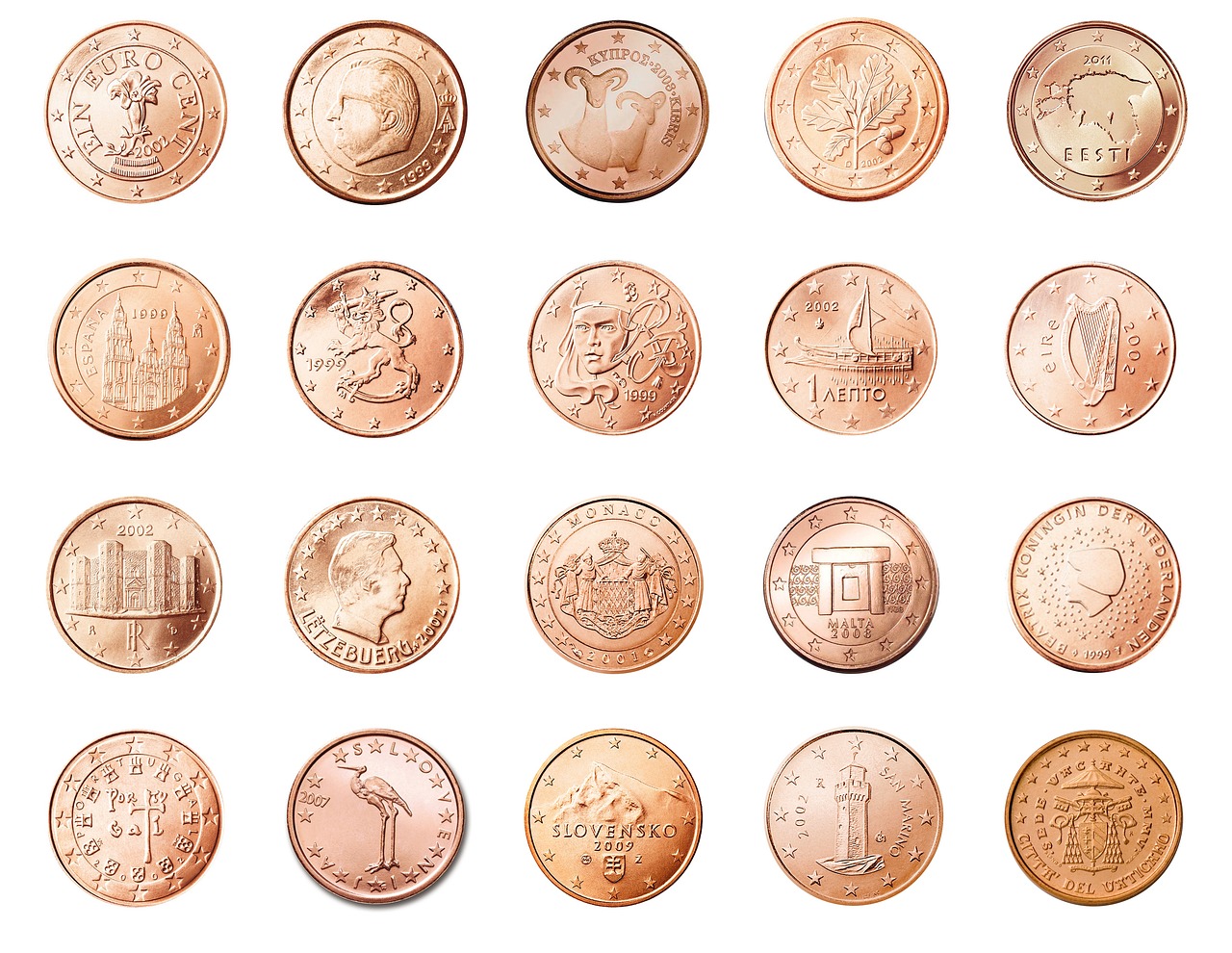
The Future of Decentralized Finance
The future of Decentralized Finance (DeFi) looks incredibly bright, filled with potential and opportunities that could revolutionize the financial landscape as we know it. As we look ahead, several key factors are poised to shape the evolution of DeFi, including technological advancements, regulatory clarity, and increased user adoption. The integration of DeFi into the broader financial ecosystem is not just a possibility; it's becoming a reality. Imagine a world where financial services are accessible to everyone, regardless of their geographical location or economic background. This is what DeFi aims to achieve, and the momentum is building.
One of the most exciting aspects of DeFi's future is the potential for mass adoption. For this to happen, several hurdles need to be overcome. First and foremost, improving the user experience is essential. Many current DeFi platforms can be daunting for newcomers, filled with complex interfaces and jargon that can deter potential users. Simplifying these platforms and making them more intuitive will be crucial in attracting a broader audience. Additionally, addressing security concerns is paramount. The DeFi space has seen its fair share of hacks and exploits, which can erode trust among users. By implementing robust security measures and conducting thorough audits, platforms can foster a safer environment for all participants.
Moreover, building trust among traditional finance users is another significant challenge. Many people are still skeptical about the legitimacy and safety of DeFi. To bridge this gap, education is key. As more individuals understand how DeFi works and the benefits it offers, the more likely they are to embrace it. This educational push could come from various sources, including online courses, community workshops, and informative content across social media platforms.
In addition to these challenges, we can expect to see innovations on the horizon that will drive the next wave of DeFi growth. Emerging technologies, such as artificial intelligence and machine learning, could enhance the functionality of DeFi platforms, making them more efficient and user-friendly. For instance, AI could be used to analyze market trends and provide personalized investment advice, while machine learning algorithms could optimize liquidity pools for better returns. The introduction of new financial products, such as insurance protocols and decentralized credit scoring, will further expand the DeFi ecosystem, making it more versatile and appealing to a wider audience.
As these innovations unfold, they will not only enhance the functionality of DeFi but also create new opportunities for users to engage with the financial system. We may see the rise of hybrid models that combine traditional finance with decentralized solutions, offering the best of both worlds. This could lead to a more inclusive financial environment where users can choose how they want to manage their assets and investments.
In conclusion, the future of decentralized finance is not just a trend; it is a movement towards a more equitable financial system. With advancements in technology, regulatory clarity, and a focus on user experience, DeFi is set to become a cornerstone of the global financial landscape. As we embrace this future, it is essential to remain vigilant about the associated risks and challenges, ensuring that the benefits of DeFi are accessible to all.
- What is DeFi? DeFi stands for Decentralized Finance, which refers to financial services that operate on blockchain technology without intermediaries.
- How does DeFi differ from traditional finance? DeFi eliminates the need for banks and other intermediaries, allowing users to transact directly with one another.
- What are the risks associated with DeFi? Risks include smart contract vulnerabilities, market volatility, and regulatory scrutiny.
- Can I earn money with DeFi? Yes, users can earn rewards through yield farming and providing liquidity to decentralized exchanges.
- Is DeFi safe? While DeFi offers many advantages, it is essential to conduct thorough research and understand the risks before participating.

Potential for Mass Adoption
The potential for mass adoption of decentralized finance (DeFi) is a hot topic buzzing in the financial world today. Imagine a future where financial services are as accessible as your favorite social media app. Sounds enticing, right? The truth is, DeFi has the power to democratize finance, breaking down barriers that have long kept many individuals from participating in traditional banking systems. However, for this vision to become a reality, several key factors must be addressed.
First and foremost, improving the user experience is crucial. Currently, many DeFi platforms can be complex and intimidating for newcomers. If we think about how easy it is to use apps like Venmo or PayPal, DeFi needs to reach that level of simplicity. Developers are already working on creating more intuitive interfaces and streamlined processes, but there’s still a long way to go. The goal is to make interactions with DeFi as effortless as scrolling through your Instagram feed.
Next up is security. Security concerns are one of the biggest hurdles to mass adoption. Stories of hacks and exploits can send shivers down the spine of even the most seasoned crypto enthusiasts. To foster trust, DeFi platforms must implement robust security measures and undergo rigorous audits. This will not only protect users but also build confidence in the ecosystem. After all, who would want to invest their hard-earned money in a system that feels like a game of Russian roulette?
Moreover, building trust among users from traditional finance backgrounds is essential. Many people are still skeptical about the viability of cryptocurrencies and DeFi. Educating these potential users about the benefits and functionalities of DeFi can go a long way. For instance, highlighting how DeFi offers greater transparency compared to traditional banking can help shift perceptions. When users realize they have more control over their finances, they may be more inclined to make the leap.
Finally, regulatory clarity will play a significant role in shaping the future of DeFi. As governments and regulatory bodies begin to understand and embrace these innovations, clearer guidelines will emerge. This will not only provide a safer environment for users but also encourage institutional investment. A well-regulated DeFi space could lead to unprecedented growth, making it a mainstream financial option.
To sum it up, the potential for mass adoption of DeFi hinges on a few critical factors: enhancing user experience, ensuring security, building trust, and achieving regulatory clarity. The journey may be challenging, but the destination promises a financial landscape that is more inclusive and accessible to all.
- What is DeFi? DeFi, or decentralized finance, refers to financial services that operate on blockchain technology, allowing users to engage in transactions without intermediaries.
- How can I get started with DeFi? To get started, you’ll need a digital wallet and some cryptocurrency. From there, you can explore various DeFi platforms.
- Is DeFi safe? While DeFi offers many benefits, it carries risks, including smart contract vulnerabilities and market volatility. It's essential to do your research and exercise caution.

Innovations on the Horizon
As we look to the future of decentralized finance (DeFi), it's clear that the landscape is ripe for innovations that could revolutionize how we think about finance. The rapid pace of technological advancements means that new tools and platforms are constantly emerging, each promising to enhance user experience, security, and accessibility. One of the most exciting areas of innovation is the integration of artificial intelligence (AI) with DeFi protocols. Imagine AI algorithms that can analyze market trends and provide personalized investment strategies, enabling users to make informed decisions without needing extensive financial knowledge.
Another promising innovation is the development of cross-chain interoperability. Currently, many DeFi platforms operate within their own ecosystems, which can limit user flexibility and access to diverse financial products. However, with advancements in cross-chain technology, users will soon be able to move assets seamlessly between different blockchains, unlocking a whole new world of opportunities. This could lead to the creation of decentralized finance aggregators that allow users to access multiple DeFi services from a single interface, streamlining their experience and maximizing their potential returns.
Furthermore, the rise of layer-2 scaling solutions is set to address one of the most significant challenges facing DeFi today: high transaction fees and slow processing times on major blockchains like Ethereum. By utilizing layer-2 solutions, transactions can be processed off-chain, significantly reducing costs and increasing speed. This innovation not only enhances the user experience but also makes DeFi more accessible to a broader audience, including those who may have previously been deterred by high fees.
In addition to these technological advancements, we can expect to see a surge in regenerative finance (ReFi) projects that focus on sustainability and social impact. As more investors seek to align their financial activities with their values, DeFi platforms that incorporate environmental, social, and governance (ESG) factors will likely gain traction. This could lead to the creation of financial products that not only offer returns but also contribute positively to society and the environment.
To summarize, the innovations on the horizon for DeFi are not just about improving existing structures; they are about redefining the very essence of finance. As these technologies develop, we can anticipate a more inclusive, efficient, and user-friendly financial ecosystem that empowers individuals and communities around the globe.
- What is decentralized finance (DeFi)?
DeFi refers to a financial system that operates without traditional intermediaries like banks, using blockchain technology to facilitate transactions directly between users. - How does DeFi differ from traditional finance?
Unlike traditional finance, which relies on centralized institutions, DeFi is built on decentralized networks that offer greater transparency, accessibility, and control over assets. - What are smart contracts?
Smart contracts are self-executing contracts with the terms of the agreement directly written into code, allowing for automated and trustless transactions. - What are liquidity pools?
Liquidity pools are collections of funds locked in smart contracts, enabling users to trade assets while earning transaction fees for providing liquidity. - Why are governance tokens important?
Governance tokens allow holders to participate in decision-making processes within DeFi protocols, influencing the future direction and development of these platforms.
Frequently Asked Questions
- What is Decentralized Finance (DeFi)?
Decentralized Finance, or DeFi, refers to a financial system built on blockchain technology that operates without intermediaries. It allows users to engage in financial activities like lending, borrowing, and trading directly with one another, leveraging smart contracts to ensure trust and transparency.
- How do smart contracts work in DeFi?
Smart contracts are self-executing contracts with the terms of the agreement directly written into code. In DeFi, they automate transactions, reducing the need for intermediaries and enhancing efficiency. When predefined conditions are met, smart contracts execute automatically, ensuring that all parties fulfill their obligations.
- What are decentralized exchanges (DEXs)?
Decentralized exchanges (DEXs) are platforms that allow users to trade cryptocurrencies directly with one another without a central authority. This peer-to-peer trading model offers greater control over assets, enhanced privacy, and often lower fees compared to traditional exchanges.
- What are liquidity pools and how do they work?
Liquidity pools are collections of funds locked in smart contracts that facilitate trading on decentralized exchanges. Users contribute to these pools and, in return, earn transaction fees. This mechanism ensures that there is always liquidity available for trading, making it easier for users to buy and sell assets.
- What is yield farming in DeFi?
Yield farming is a strategy where users maximize their returns by allocating their assets across different DeFi platforms. By providing liquidity or participating in various financial activities, users can earn rewards, often in the form of additional tokens, making it a competitive and engaging aspect of DeFi.
- How do governance tokens function?
Governance tokens are digital assets that grant holders voting rights within DeFi protocols. This means that token holders can influence decisions regarding the project’s development, rules, and policies, fostering a sense of community and decentralization in the decision-making process.
- What are the risks associated with DeFi?
While DeFi offers exciting opportunities, it comes with risks such as smart contract vulnerabilities, which can lead to exploits or hacks. Additionally, regulatory scrutiny is increasing, and market volatility can pose challenges for users. It's crucial for participants to conduct thorough research and understand these risks before engaging in DeFi activities.
- What does the future hold for DeFi?
The future of DeFi appears promising, with advancements in technology, regulatory clarity, and broader adoption likely to shape its evolution. Innovations in financial products and improvements in user experience could pave the way for mass adoption, integrating DeFi into the traditional financial ecosystem.


